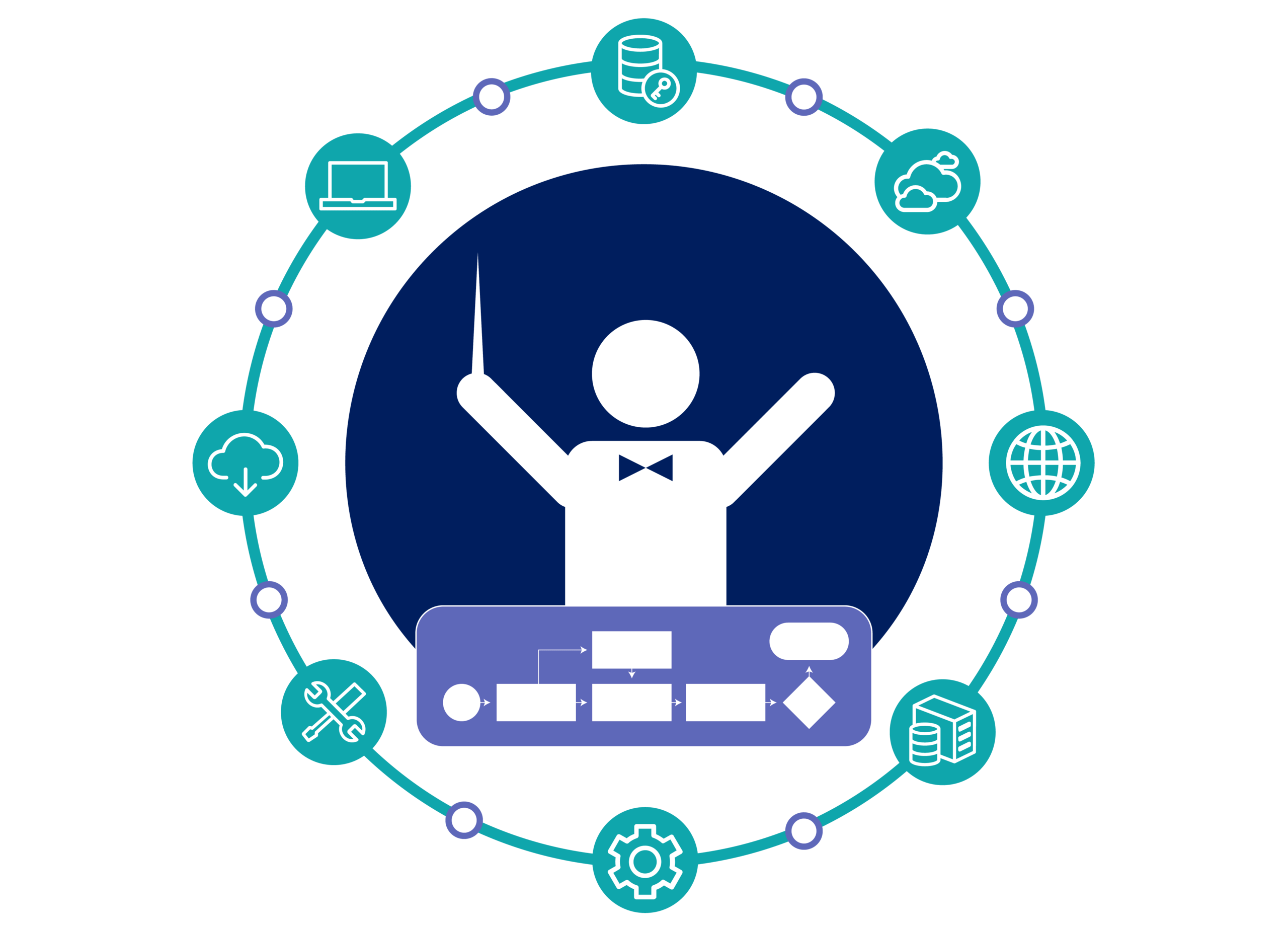
Workflow orchestration
What is workflow orchestration?
Workflow orchestration is the coordination and management of various tasks, processes, and systems within an organization to achieve a specific outcome or goal. It involves designing, executing, and optimizing workflows to ensure that disparate elements work harmoniously.


Why is workflow orchestration important?
Workflow orchestration plays a pivotal role in enhancing operational efficiency. It empowers organizations to adapt to changing circumstances swiftly and make data-driven decisions by reducing the time humans spend on manual tasks and implementing truly intelligent workflows.
Benefits of workflow orchestration
- Increased efficiency: Automation of repetitive tasks allows human teams to spend more time on higher-order, complex tasks that involve what humans do best –innovate, solve problems, and build relationships.
- Enhanced collaboration: Workflow orchestration breaks down silos, fostering collaboration across departments and teams.
- Improved visibility: When companies gain a holistic view of processes, it enables better monitoring, analysis, and decision-making.
- Scalability: Organizations can scale operations quickly to handle increased workloads without a proportional increase in resources.
- Reduced errors: Automation minimizes the likelihood of human errors, ensuring consistency and accuracy and enabling rapid development.

How does workflow orchestration work?
Workflow orchestration involves coordinating and managing a series of tasks or processes to achieve a specific outcome efficiently. In the context of technology and business, workflow orchestration typically involves defining a sequence of tasks, setting dependencies, and ensuring smooth communication between various components or systems.
Tools like workflow orchestration platforms or systems help streamline these processes, making them more manageable and adaptable to changes. They can handle tasks such as scheduling, error handling, and resource allocation, ensuring that the entire workflow functions seamlessly.


Drive consistent outcomes, deliver meaningful results, and be ready for what comes next.

Challenges of workflow orchestration
While workflow orchestration offers numerous benefits, it's not without its challenges. Common hurdles include:
- Integration complexity: Integrating diverse systems and technologies can be intricate and may require bringing in third-party expertise.
- Change management: Some within the organization may resist adapting to new workflows.
- Security concerns: Workflow automation poses security challenges due to integration complexities, potential vulnerabilities in data exchanges, and the need for robust access controls.

Types of workflow orchestration
Workflow orchestration can take various forms depending on the specific needs and nature of business processes. In general, it falls into one of two categories:
Data workflow orchestration
- Focuses on managing and coordinating data-driven processes within an organization
- Involves the seamless data flow between systems, applications, and services to ensure that information moves efficiently through various workflow stages
Application workflow orchestration
- Concentrates on coordinating tasks and processes within applications to optimize and automate specific functionalities
- Involves managing the flow of activities and information within software applications to enhance overall efficiency
These types are not mutually exclusive, and many organizations implement a combination of data workflow orchestration and application workflow orchestration to address their comprehensive business process needs.

Turn intelligence into action with the Pega Platform™.

Key elements of workflow orchestration
Workflow orchestration involves both the automation and coordination of tasks within a larger business process. Key elements include:
- Task sequencing and coordination: Define the order and dependencies of tasks to ensure a coherent flow of activities within the task orchestration framework and overall workflow.
- Automation engine: Implement an automation engine for task orchestration, i.e., executing tasks, applying rules, and integrating with systems to ensure seamless workflow execution.
- User interface and experience: Provide user-friendly interfaces for task execution and decision-making, along with notifications to keep users informed about workflow status.
- Integration with external services: Establish connections with external services and systems, allowing data exchange and interaction with third-party applications.
- Monitoring and analytics: Implement real-time monitoring tools and analytics to track workflow progress, identify bottlenecks, and optimize performance.
- Security and compliance measures: Implement access controls, audit trails, and security features to ensure data protection, compliance, and a secure workflow environment.
What are some use cases for workflow orchestration?
Workflow orchestration can be applied across various industries and business functions. Here are just three of the many potential use cases for workflow orchestration.
Research and development
In research and development, workflow orchestration optimizes processes such as experiment requests, clinical trial management, and drug discovery workflows. It fosters innovation, collaboration, and efficiency across various stages of research activities.
For example, AbbVie automated a previously manual experiment request process, achieving scalability and adaptability for future use cases. The success led to broader adoption and ongoing development to serve more than 600 users worldwide, showcasing increased efficiency in research workflows.
Financial services
Finance companies can use workflow orchestration to deliver better customer experiences and streamline previously burdensome approval and fraud detection processes.
For example, ING digitally transformed customer journeys, migrating 70 workflows into Pega, resulting in new sales service capabilities as well as providing a unified portal for clients and employees, eliminating the need for a separate interface.
Customer experience
Workflow automation streamlines processes such as customer inquiries, support requests, and order processing by automating routine tasks, enabling quick and consistent responses.
For example, Arbetsförmedlingen used the Pega Platform™ for workflow automation and streamlined its processes, saving 1,500 meetings and minimizing manual touchpoints.

Best practices for workflow orchestration success
Clearly defined objectives
Clearly outline the goals and objectives of the workflow orchestration initiative.
Continuous monitoring and optimization
Regularly monitor and optimize workflows to adapt to changing business conditions.
User training and adoption
Ensure that teams are adequately trained to use and embrace the new workflows.
What to look for in workflow orchestration software
Scalability
Ensure the solution can scale with the organization's growing needs.
Integration capabilities
Seamless integration with existing systems is crucial for a smooth implementation.
Security features
Robust security measures must be in place to protect sensitive data.
Task orchestration tools
Evaluate the software's capabilities for effective task management and orchestration.

By building smart workflows, providers can deliver high-quality patient care.

